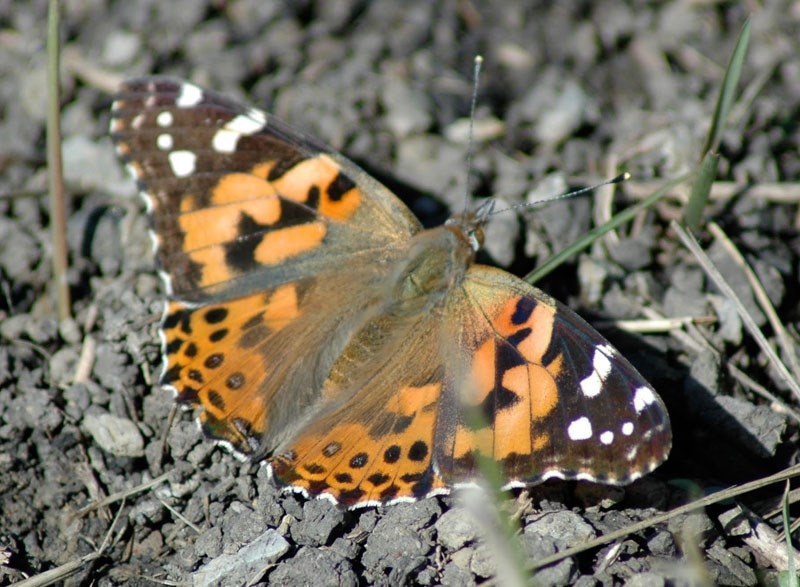Albertans should soon be awash in painted ladies as a rare butterfly migration sweeps through Canada.
Local entomologists say Alberta is poised to see a massive influx of migratory painted lady butterflies this summer – an event that only happens once every 10 to 15 years.
The painted lady is a very cosmopolitan butterfly that lives everywhere but Antarctica, said University of Alberta entomologist John “the Nature Nut” Acorn. These butterflies can be easily identified by their pinkish-orange black and white wings, big eyestalk clubs, and fat, fuzzy bodies.
Whereas you’d normally only see a few of these flutterers in Alberta in a year, Acorn says entomologists have spotted ones every couple of minutes in recent days. Those adults will lay eggs on thistle in the coming weeks that should hatch into black spiky caterpillars in early July.
“It’s shaping up to be a pretty huge painted lady year,” he says.
“I’m kind of excited about it.”
Painted ladies primarily breed in the southern U.S. and only occasionally reach the critical mass needed to migrate north, Acorn says. The last time painted ladies showed up en masse here was 2005, where you could easily see hundreds of them fluttering around north of St. Albert and/or splattered on car windshields.
Felix Sperling, curator of the E.H. Strickland Entomological Museum at the U of A, says that wet weather and El Nińo likely caused a painted lady population boom in the southern U.S., allowing successive generations to move into Canada.
“We’re probably seeing the grandchildren of those original ones from maybe two to three months ago.”
A small fraction of these butterflies may also be ones bred and released by students, he adds.
St. Albert arbourists are investigating a mysterious disease that caused many ash trees to drop their leaves earlier this spring.
City of St. Albert parks officials brought in a horticultural expert last week to study the roughly 1,000 ash trees that prematurely shed their leaves earlier this year.
The affected trees dropped some, but typically not all, of their leaves, and were found in pretty much every neighbourhood, says city arbourist Kevin Veenstra.
“It’s a weird pattern.”
The specialist has narrowed the cause down to a few possibilities, one of which was leaf spot disease, Veenstra says. The city is now awaiting lab test results.
The leaf drop appears to be over, and the affected trees are expected to recover, Veenstra says. The outbreak appears to be isolated to St. Albert.
St. Albert’s elm trees appear to be safe for now from a sticky pest ravaging Edmonton’s forests, says a city arbourist.
City of Edmonton officials raised concerns earlier this month about the European elm scale insect, which appeared to be spreading through some elm forests in that city.
These insects are notorious for dripping gooey honeydew onto windshields, Veenstra says.
“They’ll rip your windshield wipers right off your vehicle when you go to fire it up,” he said of the goop.
Veenstra says St. Albert has about 2,500 elm trees. So far this year, city crews have spotted and treated two that had European elm scale, using insecticides on one and a pressure-washer on the other.
“It’s not a big problem, but we’re on the lookout.”
European elm scale insects resemble 10 millimetre long greyish-brown ovals that are ringed with white, reports the City of Lethbridge, which is grappling with a major outbreak of the pests. The bugs can kill or weaken trees with their feeding. The honeydew they excrete can also turn the trees black with mould.
Anyone who suspects they have elm scale on an elm tree in their yard should call an arbourist to treat it, Veenstra said.



